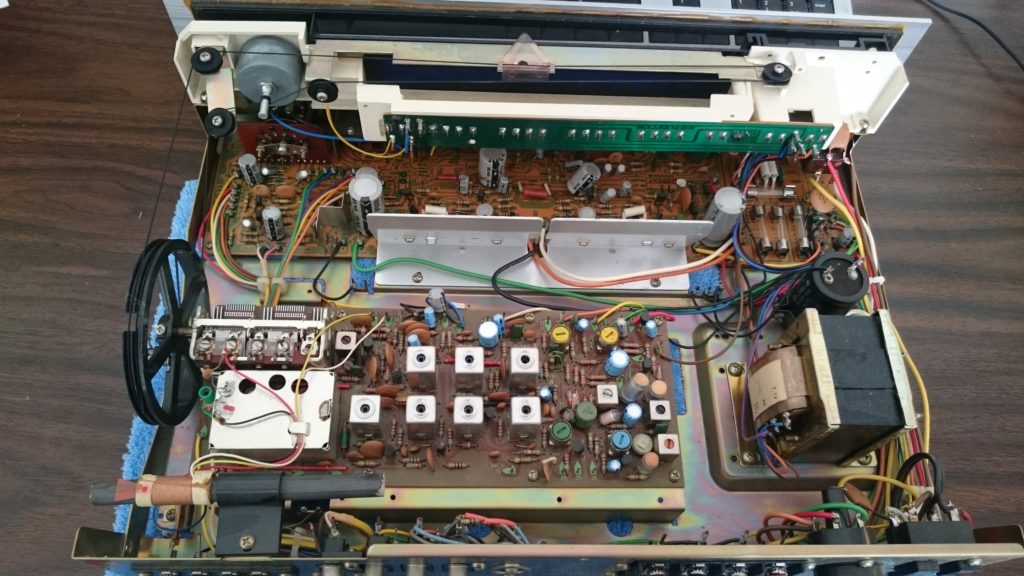
The Pioneer SX-300 was originally released in 1973 and stayed in production until 1976. It was a small, simple receiver that output 7W per channel. I found one unexpectedly at a nearby estate sale. It was sitting in a basement covered with dust, and the back panel was falling off.
Since the condition was unknown, and who knows how long it had been since it was powered up, a variac was used combined with a dim bulb tester to bring it back to life. This was done slowly to help reform any old electrolytic capacitors, and to ensure there were no potentially damaging short circuits. Luckily, it powered up successfully.
The problems
Any receiver this old will have several areas that need addressing. The volume pot, tone controls, and switches all needed cleaning with contact cleaner. The right channel was noisy as well.
The amplifier section primarily uses 2SC1344s and 2SC1345s, both of which are long out of production. Over time, they are susceptible to becoming noisy and failing. These in particular suffered from “black leg” syndrome, most likely oxidation, but it’s unclear whether this is indicative of an issue.
I used cold spray to see if I could isolate the noisy transistor(s) while the radio was playing. I was able to identify the culprit: a 2SC1344.
The repairs
Since these radios are worth a decent amount of money, and just from the historical value of them alone, I decided to re-vamp the entire radio to ensure it will play trouble-free for years. That meant replacing all the transistors and electrolytic capacitors, as well as a thorough cleaning of all the pots.
I substituted 2N5088 and 2N5210 transistors in place of the 2SC1344 and 2SC1345 respectively. These were compatible with the circuit topology and required no other changes. The footprint of these transistors was different, so I had to carefully bend them into the correct orientation before soldering.
All the electrolytic capacitors were replaced, mostly with Nichicon KL series. These are low leakage capacitors that are excellent for audio applications.
The tuner section worked beautifully and required no alignment.